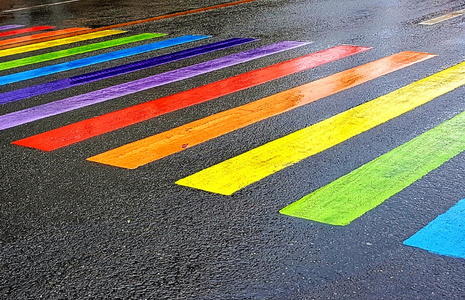Creative Arts Therapy
A guest post by Joshua Gordon
Everyone has a favorite song. Mine is “Be My Baby” by the Ronettes. I feel genuinely happy whenever I hear that song and I’m able to hum it or belt it out (when I’m alone, that is — I don’t like subjecting people to torture). While thinking of new approaches to consider for my next article, this song came up on my shuffle. As it filled my apartment with music, I wondered: could listening to certain music help people in recovery? I sprang my laptop open and started searching away. My suspicions were confirmed: Creative Arts Therapy is a form of healing that helps people with substance abuse problems recover through creating art. That sounds pretty awesome to me.
Creative Arts Therapy is holistic in nature and can prove extremely beneficial in one’s recovery and continuing on into long-term sobriety. Art Therapy is accessible to any age, race, gender, and nationality. Personally, I think this sounds pretty fantastic, but I don’t think that means this is a relatively “easy” process.
Since the age of cavemen painting on walls, people have used art to communicate their stories, their feelings, and their dreams. Creative Arts Therapy (CAT), or Expressive Arts Therapy, is a new approach to recovery from substance abuse. CAT first emerged in the 1940s when psychologists began to gain insight through drawings that their patients created. This was a logical development, an extension of Freud’s dream interpretation approach to psychotherapy. Originally, CAT was used only alongside talking therapy, but now it has become its own form of treatment. It is used with people suffering from substance abuse, eating disorders, post-traumatic stress disorder (PTSD), HIV/AIDS, cancer, and Alzheimer’s disease. The benefits of CAT can extend to just about anyone. Art therapists may work in schools, hospitals, community centers, inpatient and outpatient facilities, hospice, and even in disaster relief situations.
Expressive Arts Therapy zeroes in on four points: expression, imagination, active participation, and establishing a mind-body connection. While facilitating treatment, an art therapist will use expressive modalities like drama, music, dance, and visual art. Rather than the final product, the creative process is the focus. The patient will use sounds, pictures, experiences, or movement to filter their responses and insights. From observing the patient’s work, the therapist can make further decisions regarding treatment. Every action, from the shapes a patient draws to the tone of voice used while acting, can mean something. These are all clues that allow the therapist to identify triggers that may set off specific feelings or behaviors. They allow the therapist to identify triggers that may set off specific feelings or behaviors, which in turn helps the patient understand these notions.
As every person is unique in their own right, not everyone’s treatment will feel the same. What may work for one patient may not align with someone else’s needs. While Patient A may prefer verbal expression through acting out stories in order to heal, Patient B may feel the need to communicate through journaling or dancing. Creative Arts Therapy can lead to enlightenment about a personal issue that has been plaguing the patient for a long time. “EUREKA!”
SMART Recovery recognizes the benefits of Vital Absorbing Creative Interests (VACIs), including painting, drawing, music, drama and dance as an integral part of recovery from addictions. VACIs serve both as alternatives to unhealthy coping mechanisms and as an ongoing component of a healthy, balanced lifestyle.
About the author: Josh is an editor at Alltreatment. His main goal is to educate people about drugs and alcohol, as well as their different options for recovery. In his free time, he can be found in the mountains somewhere with his dog Chulo.
Photo courtesy of: Addiction and Art




